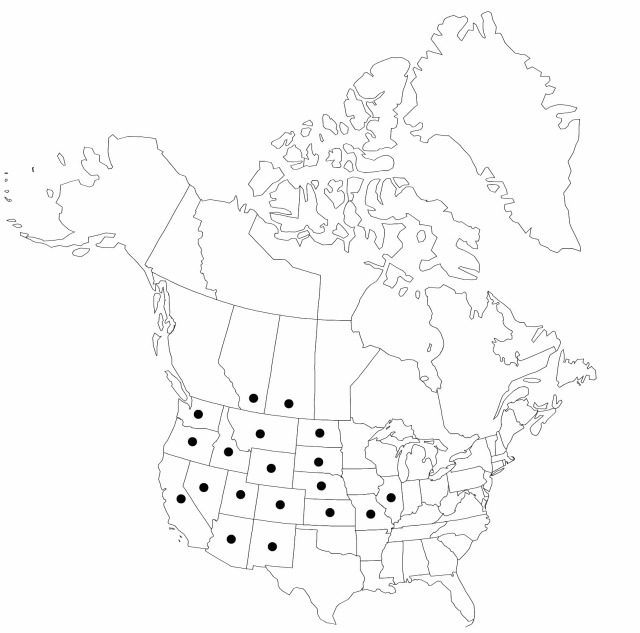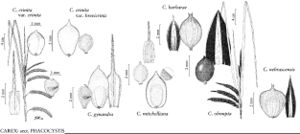Carex nebrascensis
Amer. J. Sci. Arts, ser. 2, 18: 102. 1854.
Plants not cespitose. Culms acutely angled, 20–90 cm, scabrous. Leaves: basal sheaths brown; sheaths of proximal leaves glabrous, fronts lacking spots and veins, apex U-shaped; blades amphistomic, 3–12 mm wide, glabrous. Inflorescences: proximal bract subequal to inflorescence, 3–7.5 mm wide. Spikes erect; staminate 1–3; pistillate 2–4; proximal pistillate spike 3–5.5 cm × 5–8 mm, base cuneate. Pistillate scales red-brown, longer than perigynia, apex acute, awned, awn to 0.5 mm. Perigynia divergent, brown with red-brown spots on apical 1/2, 5–9-veined on each face, somewhat inflated, loosely enclosing achenes, ellipsoid or obovoid, 2.6–4 × 1.6–2.5 mm, leathery, dull, apex rounded or obtuse, glabrous; beak brown, 0.3–0.6 mm, leathery, bidentate, teeth to 0.5 mm. Achenes not constricted, dull. 2n = 66, 68.
Phenology: Fruiting Jul–Aug.
Habitat: Wet meadows
Elevation: 0–2500 m
Distribution

Alta., Sask., Ariz., Calif., Colo., Idaho, Ill., Kans., Mo., Mont., Nebr., Nev., N.Mex., N.Dak., Oreg., S.Dak., Utah, Wash., Wyo.
Discussion
Carex nebrascensis is a common low- to mid-elevation western species that is morphologically somewhat similar to C. aquatilis; it differs in the obovoid, distended, veined perigynia with a bidentate beak and the awned scales. The amphistomatous leaves of the species are glabrous and often glaucous even when mature. Cattle frequently graze on C. nebrascensis.
Missouri and Illinois records are introductions along railroads and roadsides.
Selected References
None.
